
Looking back, it was one of the most exciting wildlife encounters of my life but during those 20 frantic seconds I thought, ‘This is finally it, but I never thought it would be a chimp who did me in’.
Six years ago, Kate and I searched in vain for Uganda’s Lost Chimpanzees of the Kyambura Gorge and only had a fleeting glimpse of these primates the next day in Kalinzu Forest. “Next time go to Kibale,” we were told. “That’s where you will experience fantastic trekking to see chimps”.
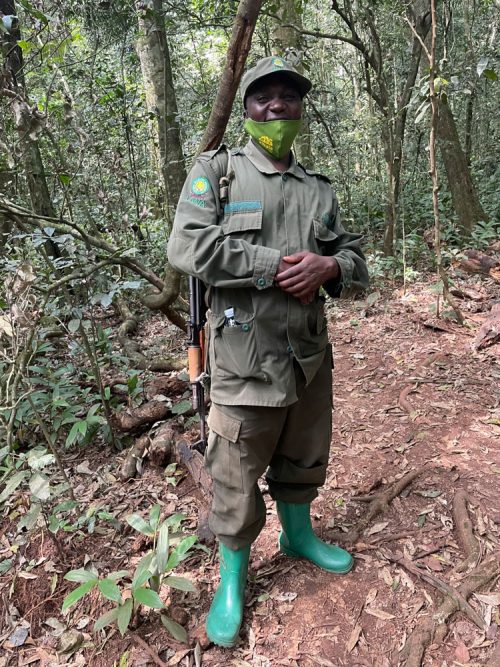

One fine day in February, my (long-suffering) travelling companion, Kevin, and I set off after our guide at a brisk pace with the hope of seeing chimps, preferably on the ground and not hanging out high up in the canopy. There was no time to waste, said our guide who was in such a hurry he forgot to give us a briefing. More of that later. We sped past 180-year-old fig trees whose canopies towered 55m above us, ignored lovely bird calls and dared not linger to take in the beauty of this remarkable tropical forest.
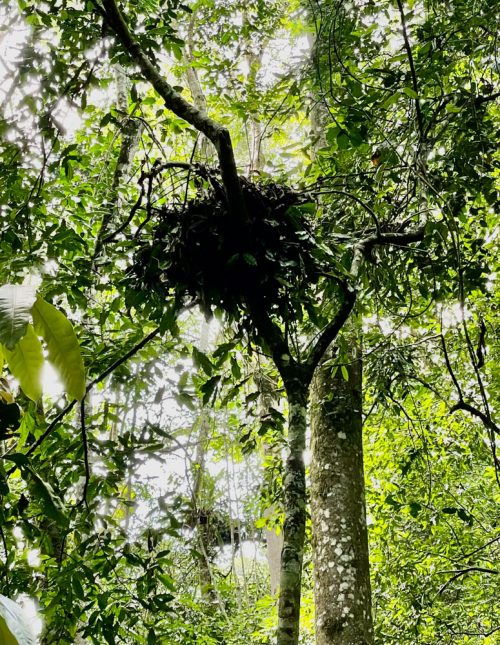

Suddenly, we were told to stop and listen. I could hear nothing but glancing way up high above us, black shadows floated from tree to tree showering us with leaf litter that caught the sunlight as it danced around us. We kept walking and suddenly we were surrounded by a group of 25 chimpanzees loping their way across the forest floor. It was magical.


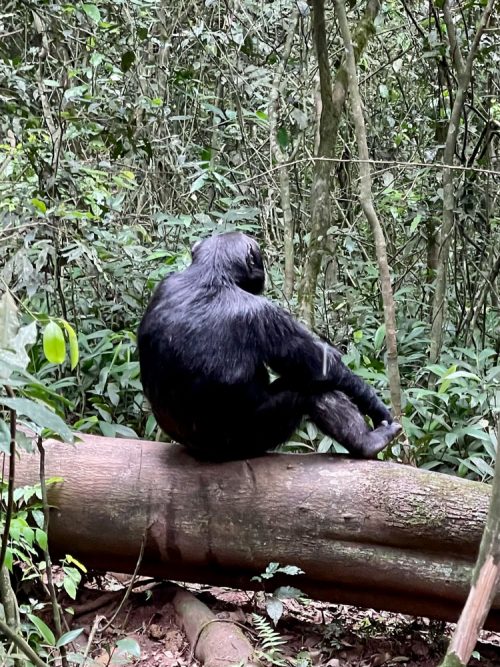

We caught our breath just below a small incline to watch a female peacefully feeding on some leaves. Ha, I thought, great iPhone video material. I was happily filming away what I thought would be some lovely footage for my grandchildren when I noticed the female stopped chewing, tilted her head and listened. Once again, I could hear nothing. She glanced briefly over her shoulder back up the incline and then the entire forest erupted in blood-curdling screams. I looked up from my phone to see a huge male chimp, arms akimbo, teeth bared, screaming with fury bearing down at us on his back legs. Turn up the sound and watch it here.
“Don’t run!” shouts the guide, I suppose better late than never. Please forgive the blasphemy as I swerved my face away from the rampaging beast’s hands which missed me by surely less than a metre. Of course, I didn’t run. I was rooted to the forest floor in terror. That was Bahoirie we were told, he is trying to assert himself as an alpha male but with no success. So naturally, he decided to take it out on us. Made perfect sense, especially when he came charging back out of the forest and chased me around a tree. I am still trying to work out why he picked on me. Kevin had some theories which are too unkind to repeat.
And of course, I would do it all again in a heartbeat.
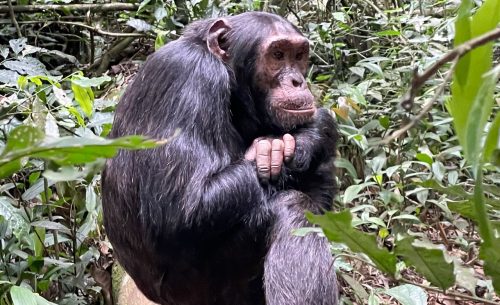
Kibale National Forest, spreading out over 795sqkm, has one of the highest diversity and concentrations of primates in Africa. It is home to 13 primates, including 1 450 chimps, the rare L’Hoest’s monkey, East Africa’s biggest population of the endangered red colobus monkey, black and white colobus, red-tailed and blue monkeys, olive baboons, grey-cheeked mangabeys, bush babies and pottos, a dear little creature which has its index finger missing, sometimes referred to as "softly-softlys".
Bushbuck, buffalo, elephant, leopard, duiker, bush pigs and butterflies also call this lovely forest home. And if that was not enough, 325 bird species can be seen here: the green-breasted pitta is a big tick I was told; the Kibale ground-thrush is endemic to the forest; the handsome great blue turaco together with the blue breasted kingfisher, black bee-eater, yellow-rumped tinker bird, little greenbul and yellow-spotted nicator all add colourful beauty to the forest; and be sure not to miss the African grey parrot and crowned eagles.
And not forgetting coffee lovers, Robusta coffee grows natively here.
Filed under: East Africa Travel
Subscribe for Weekly Stories
Comments (2):
2 March 2022
This totally cracked me up :) Thank you Frances
1 March 2022
At least you didn't say, "Oh, f__k!". Jesus instantly forgave the blasphemy under the circumstances.
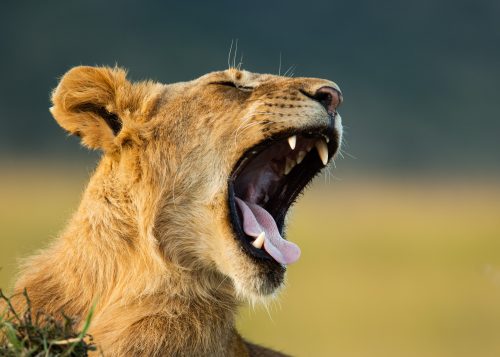
Angama Safari Offers